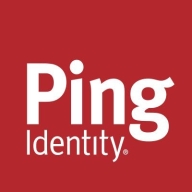

Ping Identity Platform and Red Hat Single Sign On are frequently compared solutions in the identity and access management space. Red Hat Single Sign On stands out owing to its robust features, making it a worthwhile investment for many users.
Features: Ping Identity Platform offers comprehensive authentication capabilities, adaptive MFA, and risk analysis. Red Hat Single Sign On provides seamless integration with multiple applications, efficient session management, and integrative flexibility.
Room for Improvement: Ping Identity Platform could improve its documentation, simplify its configuration complexity, and enhance its scalability. Red Hat Single Sign On needs better customer support, improved scalability, and enhanced deployment documentation.
Ease of Deployment and Customer Service: Ping Identity Platform is challenging to deploy, requiring significant time and expertise, with responsive but sometimes slow customer service. Red Hat Single Sign On is easier to deploy with quicker setup times, though its customer service needs enhancements for faster support.
Pricing and ROI: Ping Identity Platform has high initial setup costs but offers a favorable long-term ROI due to its advanced capabilities. Red Hat Single Sign On is perceived as more cost-effective initially, with satisfactory ROI driven by its strong feature set.


Red Hat is the world’s leading provider of enterprise open source solutions, using a community-powered approach to deliver high-performing Linux, cloud, container, and Kubernetes technologies.
We monitor all Single Sign-On (SSO) reviews to prevent fraudulent reviews and keep review quality high. We do not post reviews by company employees or direct competitors. We validate each review for authenticity via cross-reference with LinkedIn, and personal follow-up with the reviewer when necessary.